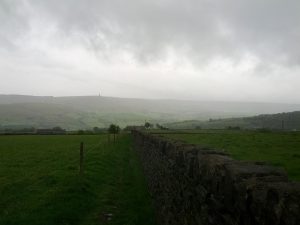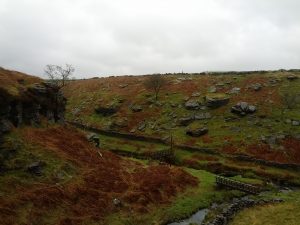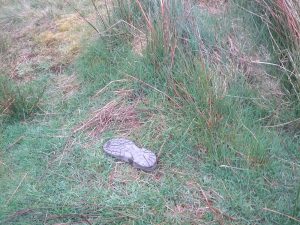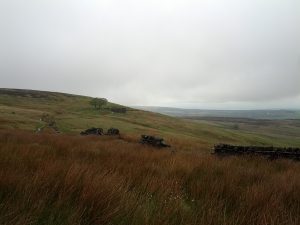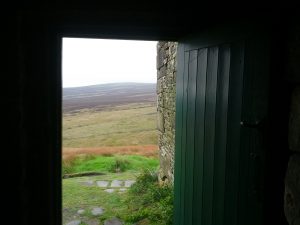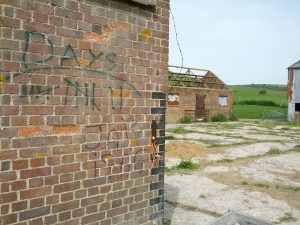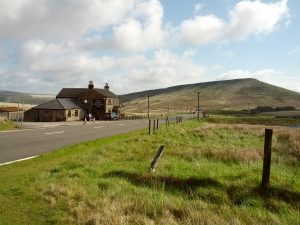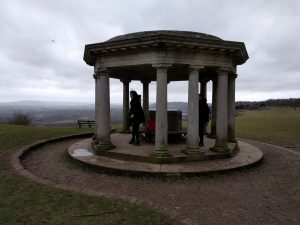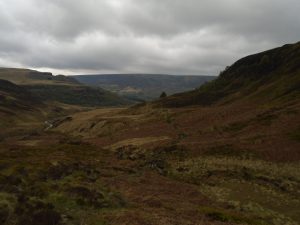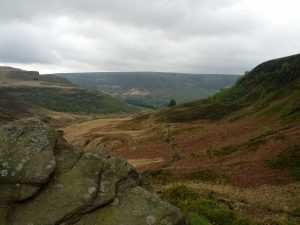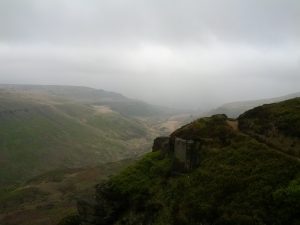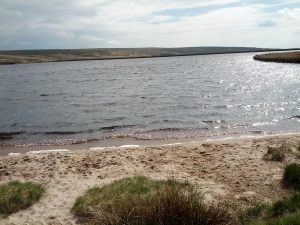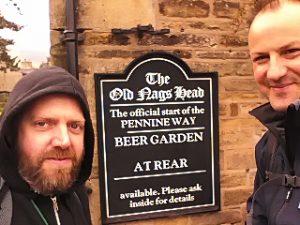1 – Day 4 of the Pennine Way started with one of the most difficult bits of hiking I’ve done. The forecast had predicted rain, and I’d hoped that we would be lucky and the storms would pass us by. No such luck. We set out in wet-weather gear, heading into town with Emma and Charlie. After separating, Dave and I followed the path along the canal. Soon after, it took a steep turn uphill.
2 – If Dave had suggested jacking it in at that point, I would have gladly done so. I’ve never been so close to giving up on a walk. Looking at the book last night, I learned that this was one of the most difficult ascents of the entire walk.
3 – As the saying goes, there is no such thing as bad weather, only inappropriate clothing. We were lucky this was on our last day, as it was a good lesson. I’m going to invest in some better rain gear than my poncho. I’m also going to have a change of clothes waiting at the car for all future walks. Despite the rain, the day was better than pretty much any day that I’ve spent in an office.
4 – One of the interesting things about a trail like this is that you hear about the people ahead of you. We knew there was an Australian woman ahead of us and we finally met her on the final day. We decided to walk together, which was an interesting change of pace (and conversation). The Pennine Way was the first of a series of adventures around the world that Carolyn had planned.
5 – It turned out on this walk that Dave is incredibly good at recognising different types of birds. He also knows a lot about farming. I learned that it isn’t possible for sheep to deliver triplets without human intervention – without help, the third always suffocates. The sheep were full of bedraggled lambs, which Dave told were about a day old. Our group was silenced by the sight of a dead one in the grass.
6 – I need to do a whole post on walking and Lord of the Rings. Tolkein’s classic is basically a book about hiking with a load of battle scenes thrown in. I think this is something the movies got wrong, not paying enough attention to the walking. Our walk had its Tolkeinesque moments, with Hebden Bridge providing our hearty Rivendell-style welcome. And, tramping along the damp moorland paths, it was easy to recall the grim tramping of the second book.
7 – We crossed the moors towards Top Withens, a ruined famouse that is said to be the inspiration for Wuthering Heights – despite looking nothing like the house in the book, and there being no evidence for a link. A slightly sniffy sign protests its own presence, saying it is only there because of tourist demand. I was more than ready to take shelter behind the ruined walls. Fortunately Dave looked round the side and found a dry indoor shelter. I’ve been in posh hotels that felt less welcoming and luxurious than this hut with its dirt floor. It was so good to be somewhere dry for a bit.
8 – We said farewell to Carolyn at Ponden and then walked on to Stanbury. A succession of buses and trains took us back to Edale where we’d started the walk. The first quarter of the Pennine Way was complete. We’re going to continue in September.

